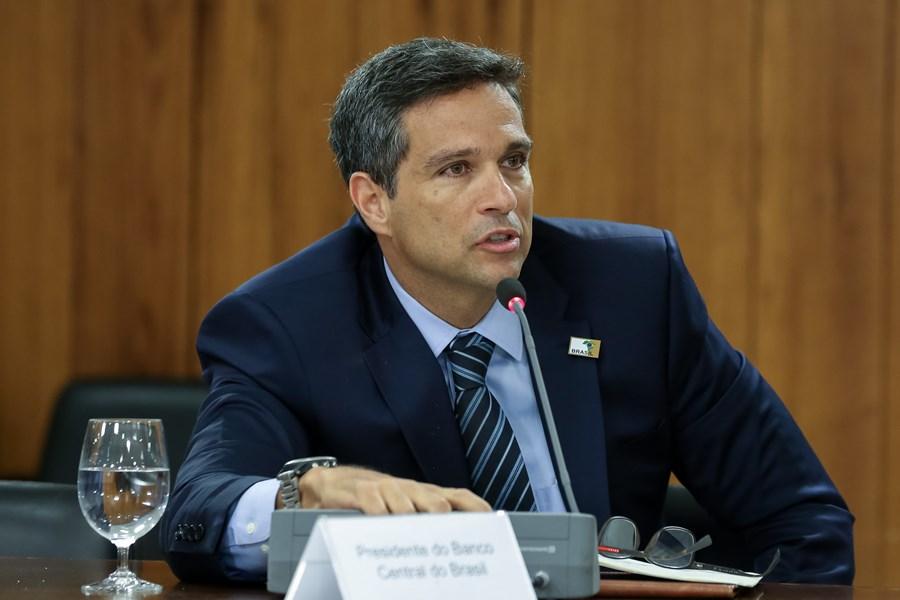RIO DE JANEIRO, BRAZIL – Central Bank President Roberto Campos Neto set the tone earlier this month: despite the crisis triggered by the pandemic, Brazil could live with interest rates close to the current level and a more depreciated exchange rate in the coming years if it continues to pursue the rebalancing of public accounts.

The market projects a basic interest rate of two percent per year by December, below the current rate of 2.25 percent, according to the Central Bank’s Focus report. Analysts also point to a SELIC rate of three percent at the end of next year and five percent in late 2022.
These are interest rates that draw the country closer to a civilizing reality, with which wealthy countries and some emerging economies are familiar. Civilizing, because there is no instance of a country managing to develop with interest rates as high as those Brazil lived with for decades, above ten percent per year.
Low interest rates can be an additional factor of medium and long term boost for the country’s development, similar to the impact of inflation control with the Real Plan since 1994. Its positive chain impacts are starting to spread through the economy.
These are impacts felt by the small investors in the financial market for some time, when they realize that they will have to leave the comfort of fixed income and migrate to the stock market or to higher risk assets if they want higher profitability.
For the real estate market, the SELIC at historically low rates has translated into ever lower interest rates, due to the banks’ lower fundraising costs and the competition among them to attract consumers. And this has fueled the market, generating business for companies and expanding family assets.
Real estate sales in the city of São Paulo beat a record in 2019, according to Secovi-SP, the syndicate that represents real estate companies in the state.
On a larger scale, low interest rates also impact entrepreneurs and large investors, who now have another reference point before deciding on the allocation of funds. The cost of borrowing on the market also drops, which allows companies to have more resources for their business.
Low yield reduces the attractiveness of government bonds, leading investors to assess alternatives to achieve a higher yield: they can be real economy projects, directly or indirectly, which ultimately drive growth.
One of the segments that should benefit the most is infrastructure, given the need for works (which demand capital) to improve ports and highways, among others. These are investments that will increase the economy’s productivity.
“Projects that were unfeasible before from the capital return perspective now make sense,” says André Rebelo, advisor for strategic issues of the Federation of Industries of the State of São Paulo (FIESP).
He sees an opportunity for structural change in the Brazilian economy, which will not be felt overnight, but gradually.
Rebelo points out as another positive impact the increase in private bond issues by companies, which are now able to raise funds in the capital market at a lower cost than in the financial system. There was a 20 percent growth in the number of these bond issues in the market in the year to May, double the increase in credit through banks, according to Central Bank data.
Interest charged by financial institutions is gradually beginning to follow the drop in the SELIC, but the pace is lower. This occurs because the SELIC serves as a reference, but is not the only factor behind the breakdown of the final interest rate for companies and consumers.
The lack of collateral for those lending in case of default, the taxes charged by the government and the profit margin of financial institutions help to push the interest rate up for the borrower. Average rates in May stood at 14.2 percent per year for businesses and 42.7 percent for individuals.
However, the positive impacts could feed a virtuous circle, says Carlos Pedroso, chief economist of Japanese bank MUFG in Brazil. “It’s all linked together, one thing drives the other. Low interest rates encourage consumption and investment, they are reflected in employment, and this improves the government’s collection,” he says. All in all, there is an additional wealth generation for families and companies.

Efficient state
Government revenues still take time to react amid the pandemic, but another positive impact of a lower SELIC has been felt in public accounts. As the SELIC rate is the main reference for debt interest rates, the government has been able to significantly reduce this expense: in 2019 alone, savings amounted to R$68.9 billion, with the rate dropping from 6.5 to 4.5 percent over the second half of the year, according to the Ministry of Economy’s calculations.
This figure exceeds the federal government’s investment last year, which stood at R$56.6 billion.
At the start of the year, the market agreed that the 4.50 percent would remain throughout 2020. But the brutal drop in activity triggered by the novel coronavirus pandemic led the Central Bank to halve that rate. And, as explained above, with the prospect of low levels at least until 2022.
“We’ve gained a two-year window or a little longer to progress the reforms and ensure a sign of fiscal balance,” Mansueto Almeida, then-Treasury Secretary, said on an online interview with InfoMoney a month ago.
The signaling means the country’s commitment to continue pursuing fiscal solvency in the medium term. It means that, after the extraordinary spending period with the pandemic, the government will return to the agenda of measures that provide investors confidence that the country’s debt is manageable and that, consequently, interest rates need not rise. This is the premise mentioned by Campos Neto.
In this scenario, the country will have a new necessary condition, albeit insufficient by itself, to resume its path of sustainable growth. Measures such as improving the business environment (a direct consequence of the tax reform) and investment in education are also essential.
The road is long, but the country is progressing somewhat further with low interest rates.
Source: InfoMoney

